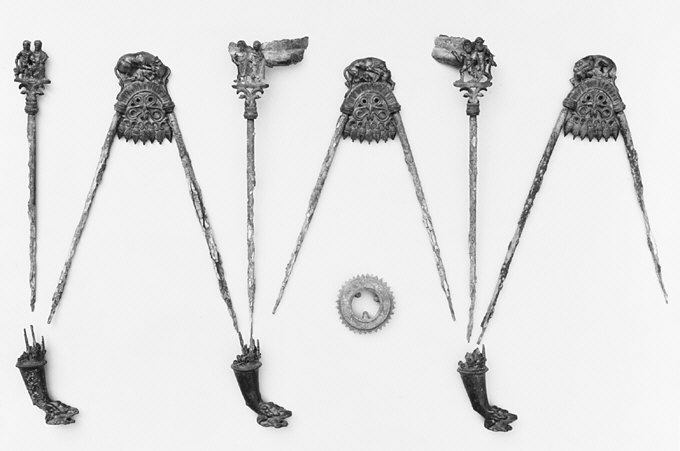Bronze tripod
The city of Vulci was famous in antiquity for its production of luxury bronzes. One popular type of item was the tripod, an elaborate stand to support either a cauldron or a brazier. Tripods were produced at Vulci for about seventy years, from about 540 to 470 B.C. This example is elaborately decorated with lion's-paw feet surmounting frogs, wild beasts attacking their prey on the arches above elegant palmette motifs, and a pair of mythical subjects at the top of each of the vertical rods. These depict the divine twins Castur and Pultuce (Greek: Kastor and Polydeukes), Hercle (Greek: Herakles) and his protectress, the goddess Menrva (Greek: Athena), and two satyrs. The three subjects do not have any obvious connections to one another. Stylistically, the execution of these small figures is similar to that of the related depictions of the divine twins on the pair of bronze volute handles (64.11.4a, b) in a nearby case.
Due to rights restrictions, this image cannot be enlarged, viewed at full screen, or downloaded.
This artwork is meant to be viewed from right to left. Scroll left to view more.




